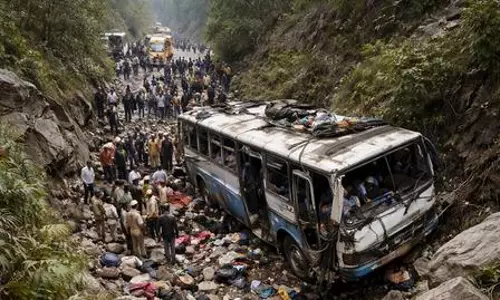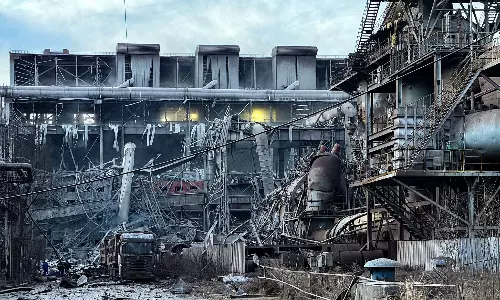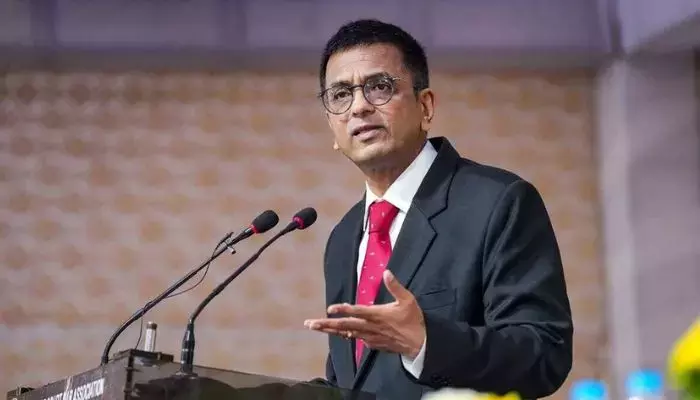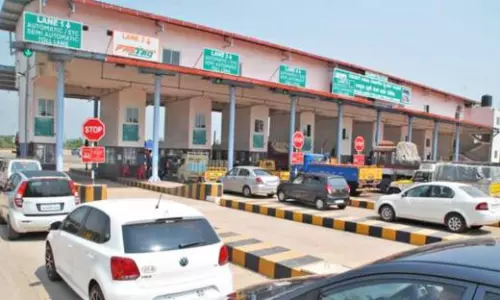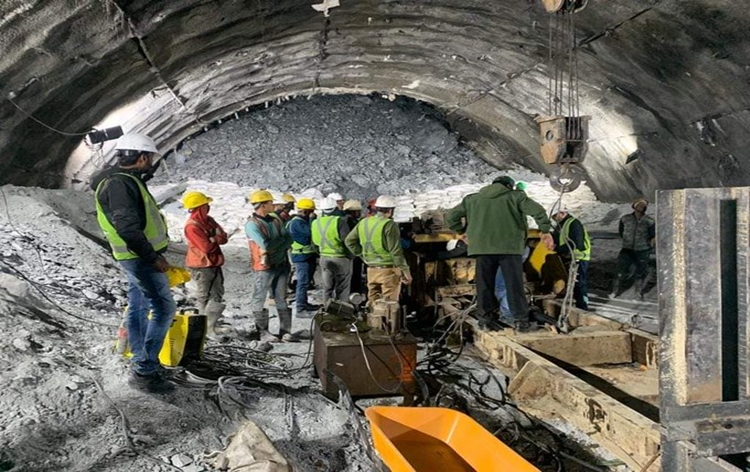
The signal from Silkyara tunnel incident
text_fieldsEleven days into the start, efforts are still on to rescue the 41 workers caught in the tunnel at Silkyara in Uttarkashi and is said to be nearing success. But each stage of the rescue operation which started on the morning of November 12, is full of unprecedented challenges. In case of any mistakes, it will affect the safety of not only the people trapped but those involved in the rescue operation too. About ten expert teams and experts from international organisations are working hand in hand to survive the obstacles. The hope and prayers of the entire country are with the rescue workers who are dedicated to the drive to restore the labourers back to life. A rescue operation of this magnitude is unusual n the country. For that very reason, the country has been watching with fingers crossed about how successfully the mission would be. And the breaking of rocks that were weaker when the drilling equipment that bored through the tunnel increased the anxiety. The need to cut off the iron sheets that were part of the construction, but got stuck many times, also delayed the rescue effort reaching the target.
It was on 12th of this that along the Bramkhal-Yamunotri Highway, one side of the tunnel at Silkyara-Dandalgaon caved in endangering the lives of the workers. The road construction is part of the Chardham project of the union Ministrty of National Highway. The benefit from the tunnel once its construction is complete is that the distance from Uttarkashi to Yamunotri Dham will be reduced considerably. Tunnels of a huge scale were built earlier also in the country including along the Konkan route and in Kuthiran of Kerala. And the Atal tunnel which is the longest tunnel of the country is another example. But the disaster of Silkyara was without any parallels. This in most probability was caused by the large scale construction activity in the ecologically fragile Himalayan region. It is said that the very mountain was sinking. In incidents not very old, in Joshimat and surrounding areas in Utharakhand, due to unexplained reasons, land gave way and cracked and consequently 600 families had to be relocated. As a result, large number of buildings had to be abandoned too. It is welcome that in the light of the Silkyara incident, the National Highway Authority has decided to conduct inspection in 29 tunnels. But such inspections are not to be made only when some disaster strikes. The pattern of development which does not disturb the environment and in controlled manner should strictly be adhered to. According to the findings of geological scientists, the Himalaya is a mountain range that has not completed its evolution yet and is without hard rocks. When drilling and excavation are conducted for development, it was pointed out sufficiently in advance, that it should be done with extreme caution. And there are several studies in this regard. But as a matter of fact, in the name of development, construction activities of a large scale are happening in the various areas of the Himalayas. Further, the debris of this construction operation is also dumped in the very Himalayan valley. Experts point out that the recent floods in the valleys are a sequel of the waste thrown into the river banks.
The rescue operation continuing for 11 days to save 41 workers also makes history. Earlier, in Thailand’s Tham Luang cave, 12 children and a football coach were trapped for 17 days who were eventually saved and brought out. And in the Amazon forests, four children of age 11 to 12 survived after 40 days which also made history. May the Silkyara rescue mission also qualify to be added to such records of history. Each natural disaster is a reminder. The warning here is that before the next disaster strikes, there should be sufficient thinking and re-evaluation about what all is to be done in such places. We cannot avoid doing what is absolutely essential for progress and development. But those that are avoidable, and with possibilities of alternatives should be handled in that angle. Thus, this tragedy and the hopefully shining survival from it should be seen as a message that ruling establishments should display the vigilance to take that wise course.




